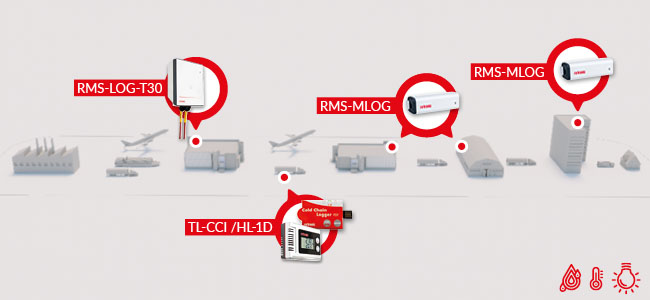
A cold chain is a temperature-controlled supply chain. A supply chain is a network between a company and its suppliers to produce and distribute a specific product to the final buyer.

A cold chain is a temperature-controlled supply chain. A supply chain is a network between a company and its suppliers to produce and distribute a specific product to the final buyer.

The qualification of the area is to demonstrate that the area is fits its intended using scientific proof.
When certain products are exposed to incorrect temperatures the product quality is no longer guaranteed. In the pharmaceutical, cosmeceutical and the food industry, this is even more important as consumers lives can be put at risk due to the temperature effects on the products/ingredients such as decomposition, diminished effects/taste and spoilage.
In the pharmaceutical industry regulations have been put in place to protect the patients and to deliver quality-assured, safe and effective products. The temperature range, along with other parameters, to ensure product quality is defined during the product risk assessment.
An unbroken cold chain is an uninterrupted series of storage and distribution activities which maintain a given temperature range. In the most critical of cases, if the cold chain is broken, the product if used/consumed, may put someone's life in danger. As of such when the cold chain is broken, non-compliances occur.
The Good Distribution Practice (GDP) quality guidelines describe the minimum standards that must be met to ensure that the quality and integrity of medicines is maintained throughout the supply chain. GDP applies to sourcing, storage and transportation of active pharmaceutical ingredients and other ingredients used in the production of medicines.

US Food and Drug Administration:
International Conference on Harmonisation of Technical Requirements for Registration of Pharmaceuticals for Human Use (ICH):
The collection of rules and regulations governing medicinal products in the European Union, Eudralex:
The GxP guidelines state that the area used must be qualified, temperature should be monitored, and monitoring devices must be calibrated to meet the guidelines.
Qualified: The qualification of the area is the process of proving that the area meets the requirements for its intended purpose.
Monitored: The critical control parameters (temperature amongst others) are measured and saved for ulterior use (sometimes for up to 18 years or longer).
Calibrated: The devices used for monitoring purposes are showing the correct values.
The devices are calibrated on a regular basis to ensure that the measurements are always showing the correct values.
The regulations don’t state how to fulfil regulations and as of such, the user can define how they qualify the areas, how they monitor the area and how often to calibrate the devices.
The U.S. Pharmacopia has defined a temperature-controlled management process to ensure product quality:
Once the product temperature requirements are defined, the USP 659 Packaging and storage requirements provides storage condition definitions relevant to the storage and distribution of active ingredients, excipients, and medical products, such as pharmaceuticals, devices, combination products and dietary supplements.
All products should have specific directions in respect to the storage conditions (the temperature or humidity) at which an article must be stored and shipped. The temperature and storage definitions for pharmaceutical products are the following:
WHAT IS MEAN KINETIC TEMPERATURE?
The mean kinetic temperature is the total influence of temperature on an object or product over a certain period of time.
Extract from the ICH Topic Q 1 A (R2): Stabilty Testing of new Drug Substances and Products:
Mean kinetic temperature: a single derived temperature that, if maintained over a defined period of time, affords the same thermal challenge to a drug substance or drug product as would be experienced over a range of both higher and lower temperatures for an equivalent defined period. The mean kinetic temperature is higher than the arithmetic mean temperature and takes into account the Arrhenius equation.
Once the application of the area is defined, a temperature mapping is carried out to ensure that the entire room is controlled within the defined temperature range. This mapping will define hot and cold spots within the area that will then need to be monitored.
The qualification of the area is to demonstrate that the area is fits its intended using scientific proof.
The areas that need to be qualified for GDP applications:
Rotronic offers devices for mappings, as well as rental kit and complete mapping services.